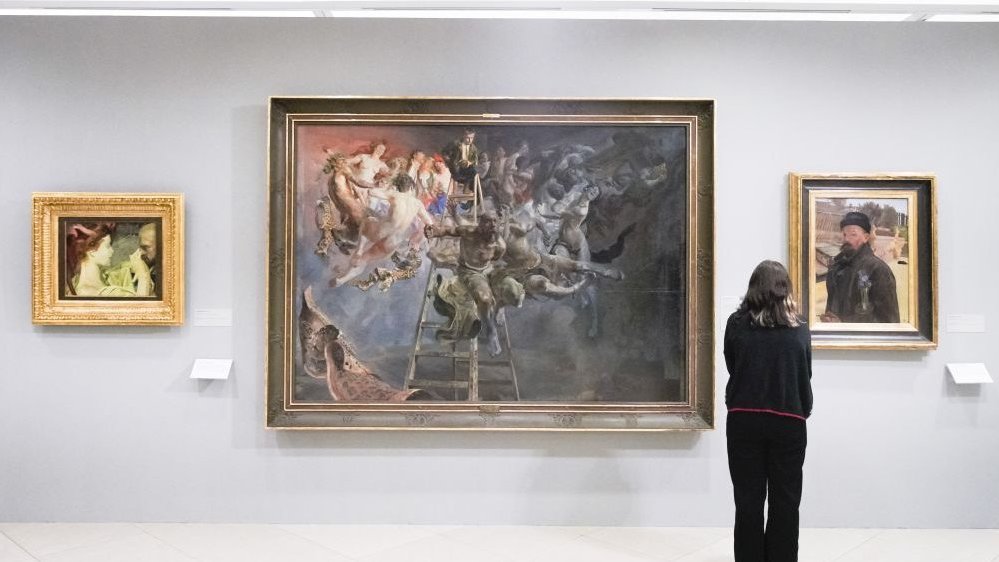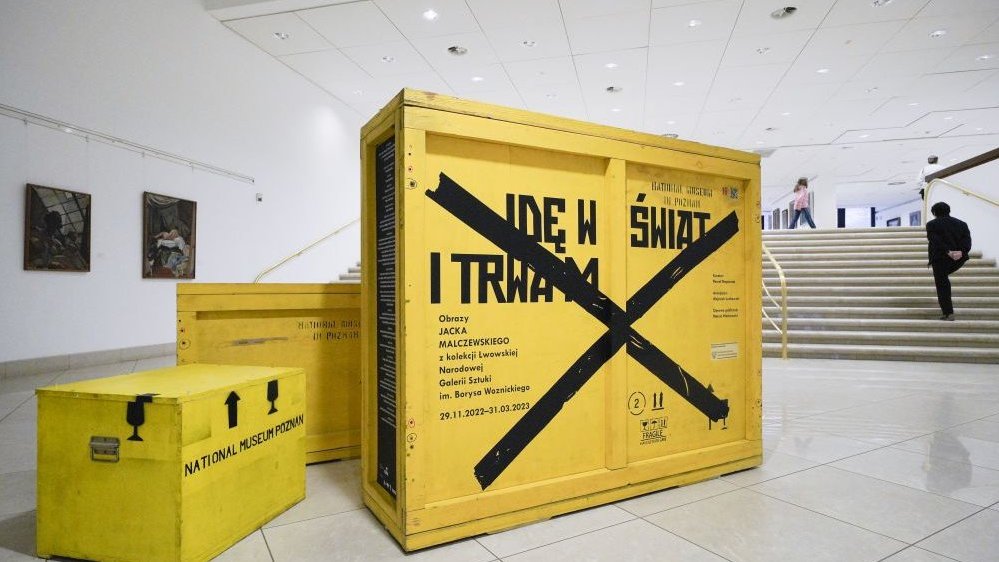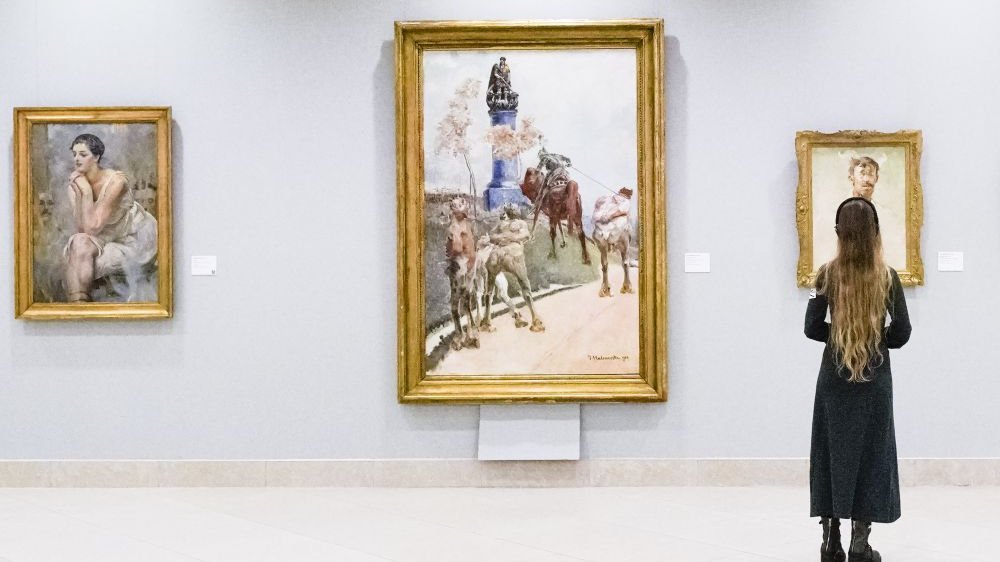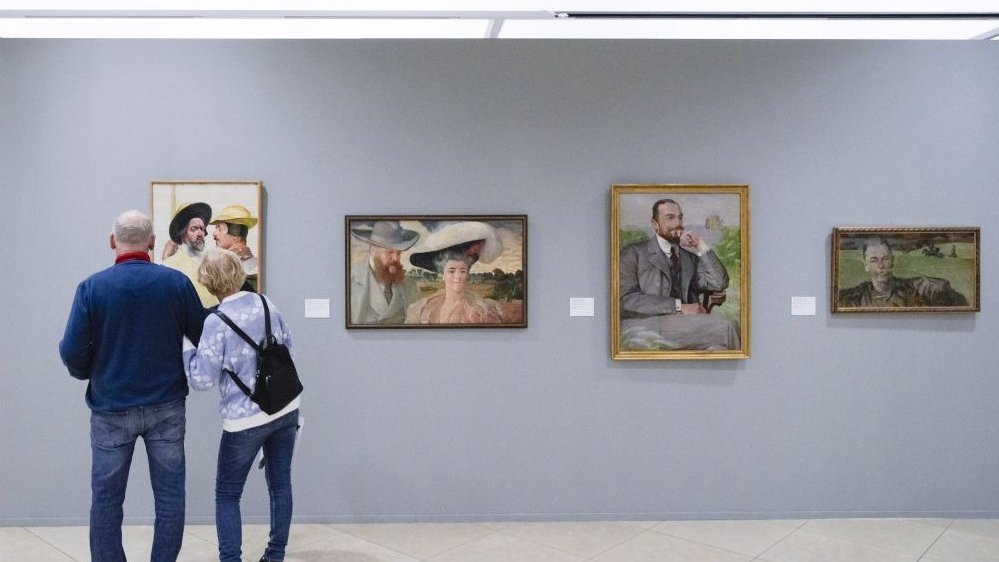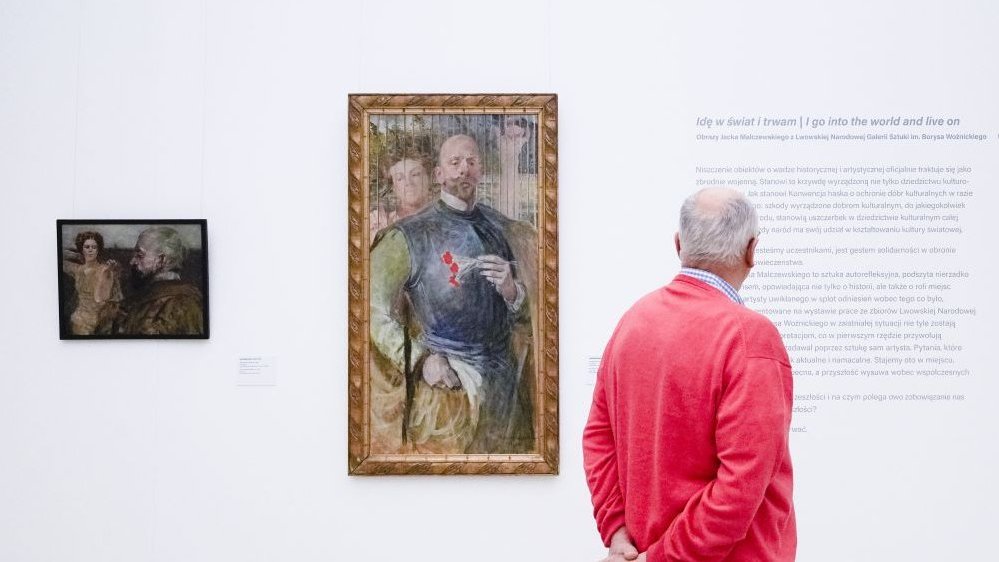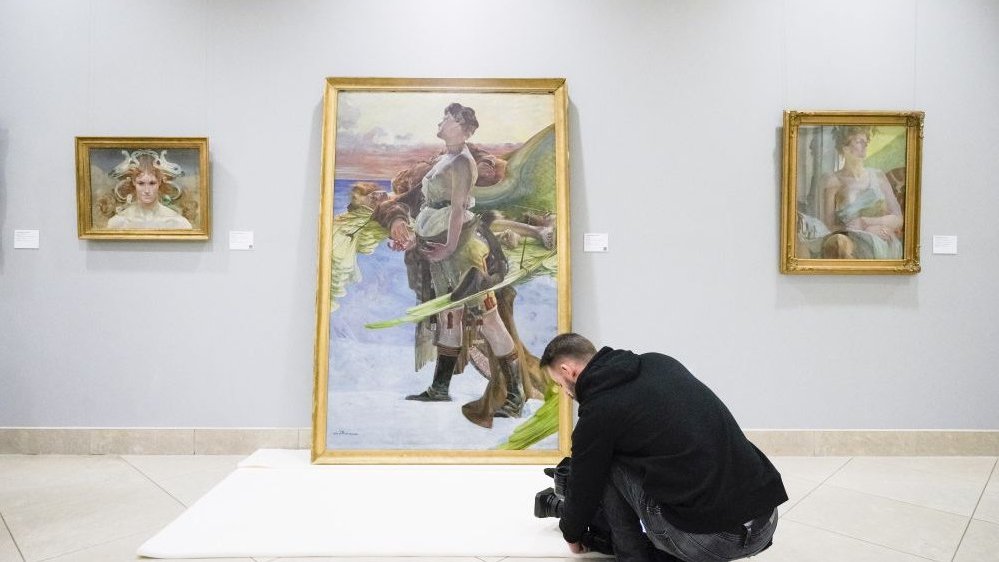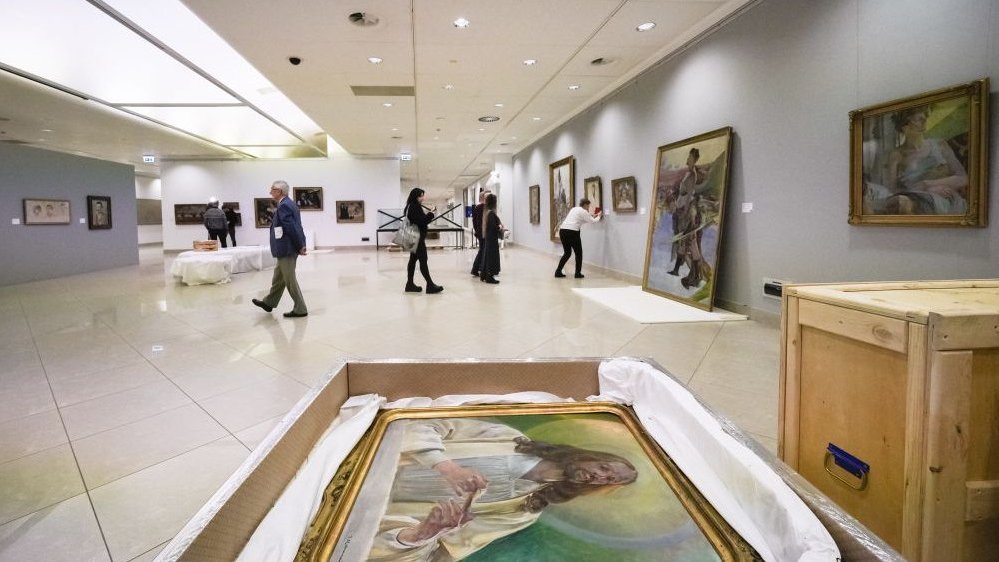Caution: Risk of Destruction
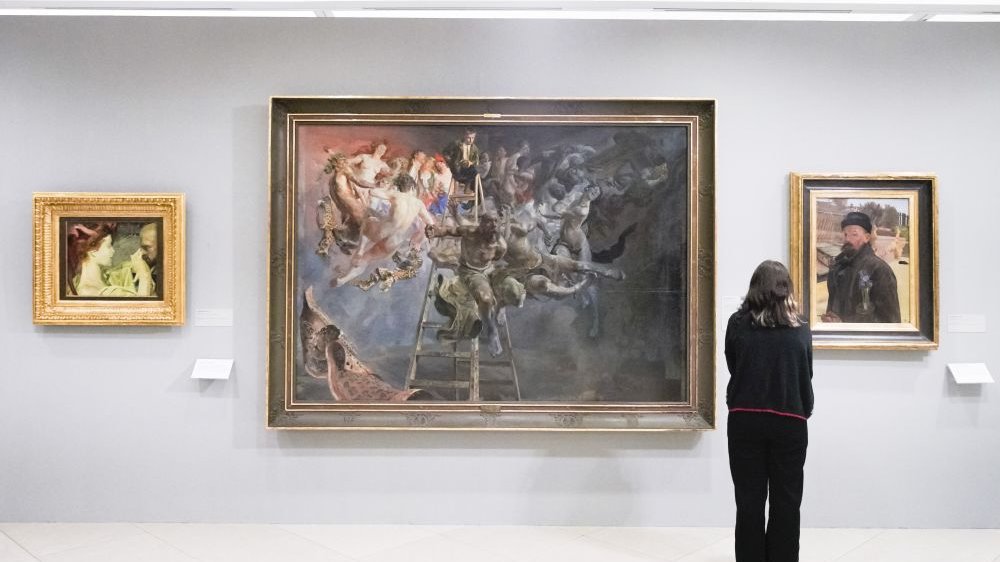
In October last year, Head of the National Museum of Poznań Tomasz Łęcki and Head of the Lviv National Art Gallery Taras Voznyak signed a memorandum of cooperation. The exhibition projects discussed at that time must have been a far cry from the exhibition currently on view in the National Museum of Poznań. UNESCO has recently announced that, as of November 28, 2022, 221 sites of cultural heritage significance have been destroyed in the war in Ukraine. These include 10 libraries, 17 museums, 18 monuments, 78 buildings of historical and/or artistic significance and 98 sites of religious worship. Destruction of historical sites is considered a war crime and a violation of the 1954 Hague Convention on the Protection of Cultural Property in the Event of Armed Conflict. This devastation is a crime against the cultural heritage of both Ukraine and the world at large.
Malczewski is one of the most eminent symbolist painters. He would often say that he "painted to help Poland rise again". His art promoted a romantic idea of national martyrdom and patriotism and was largely inspired by Polish folklore. It also at times alluded to biblical and mythological themes while drawing on actual history. A number of Malczewski's portraits and self-portraits, which were among his favourite forms of expression, will be on display as part of the Lviv collection.
The collection was placed on the museum's first floor, next to works of modern art. In fact, the Lviv collection of works by Malczewski mirrors the permanent holdings of the National Museum of Poznań. In an interview given to Justyna Żarczyńska, the exhibition's curator Paweł Napierała noted that: "The exhibition's focus is not to interpret Malczewski's works but rather to revisit the questions he asked about the role of the artist and museologist in relation to history, the nation, heritage and art. Symbolism, imagination and the like are only secondary [...]. The display has slightly diverged from usual presentations of Malczewski's paintings. It is meant to highlight the uncertainty of being in a given place."
The exhibition's poster has been designed by Marcin Markowski, while the works themselves have been arranged by Wojciech Luchowski. Markowski's minimalist black-and-white graphics perfectly correlate with Luchowski's stark arrangements. The latter begin at the museum entrance at which huge yellow boxes in which the paintings were shipped have been placed. More wooden boxes as well as empty, sealed display cases can be spotted in the exhibition space proper.
Not all works are displayed the traditional way by being put up on walls. One of the canvases, still in its packaging, leans against a wall. The painting Christ in Emmaus remains in its shipping box, which upsets any presumption that the exhibition might be a classic presentation of Malczewski's paintings. This is precisely the point. Placed centrally in the exhibition space are brochures documenting project work and how the paintings were moved. Background information is also provided on the artist's works themselves and their central motifs. The paintings have been clustered in a relatively small space, which gives the display a sense of density. However, the multiple shipping boxes, sealed display cases and black-and-white brochures strewn across the exhibition space serve as visual disruptors signalling that something is off.
While the exhibition brochures provide ample background information, they stop short of answering the curator's questions concerning the roles played by the artist, the museologist, and cultural heritage during wartime. Despite evident parallels between Poland's dramatic history, as portrayed on Malczewski's canvases, and current developments in Ukraine, the exhibition's commentary reads that the painter's works, which offer testimony and support critical analysis of history, now also bear "witness to the savagery of war". The text dangerously compares the symbolic journey of the paintings to the "flight" of Ukrainian refugees "in search of a safe haven". This analogy is unjustified as both the viewers and the authors of the exhibition idea appear in the privileged role of observers.
Our job is not only to reflect on the wartime fates of cultural heritage but also to raise awareness and educate people. The I go out into the world and live on exhibition is missing the very thing that cannot be seen in Malczewski's brushstrokes: solid statistics. A thorough article titled "Protection of Ukraine's cultural heritage in wartime" posted last April on the website of the Central European Institute shows, among others, the oblasts (regions) that have suffered the most damage from the war crimes that the Russian army inflicted on Ukrainian cultural heritage (these oblasts are Kharkiv, Donetsk, Kiev, Chernihiv, Lugansk, and Sumy). It emphasised the role of volunteers who provided their own cars and buses to significantly contribute to saving the cultural heritage. It also describes the operation of the Heritage Rescue Staff, the Museum Crisis Centre and, finally, the international project "Saving Ukrainian Cultural Heritage Online", whose thousand plus programmers, archivists, scholars, and librarians have been busy archiving artefacts of Ukraine's cultural heritage.
These specific efforts need to be recognised. Półtorak notes that the museum "has two exhibitions, one from the Poznań and the other one from Lviv, facing each other". But, and there certainly is a "but", while Malczewski's "Poznań" display is at home and well settled, its "Lviv" counterpart has come to us looking for a safe haven. The provisionality and uncertainty that results from the contrasting juxtaposition of the Poznań and Lviv collections is not without significance and prompts a more general reflection. Luchowski's austere arrangement of the exhibition needs to be backed up with basic statistics on the number of works taken out of Ukraine, the number of historical sites that have sustained partial damage, the number of those that are irretrievably lost and the most affected cities. Only such information will enable us to see the exhibition at the National Museum through the lens of provisionality and uncertainty.
Klaudia Strzyżewska
translation: Krzysztof Kotkowski
Exhibition: I go out into the world and live on, curated by Paweł Napierała, the National Museum, open until 31 March
© Wydawnictwo Miejskie Posnania 2022
See more

From One Celebration to Another

Christmas Markets and Fairs with Attractions

Truly Festive Vibes

